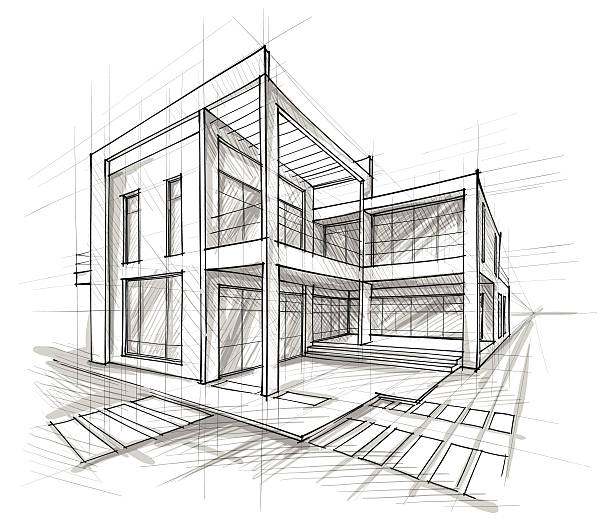Discover Ingenious Layouts with Leading CDA Architects for Your Next Task
An Extensive Overview of Architectural Styles and Their Influence on Modern City Preparation and Development
Building styles have actually long offered as a mirror to the social values and technological developments of their time, playing a crucial role in forming modern city preparation and advancement. From the magnificence of Neoclassicism to the utilitarian strategy of Brutalism, each design has actually presented one-of-a-kind principles that influence urban aesthetic appeals and performance.
Historic Review of Building Styles

As societies transitioned with the Middle Ages, Gothic style arised, characterized by its verticality and complex describing, mirroring the spiritual aspirations of the period. The Renaissance noted a revival of timeless perfects, combining art and style in ingenious ways that influenced subsequent designs throughout Europe.

Today, building designs proceed to evolve, driven by globalization and sustainability issues, reflecting a dynamic interaction in between heritage and advancement. This historic review highlights the value of design as a mirror of societal evolution and as a driver for metropolitan advancement.
Secret Architectural Styles Explained
The diversity of building designs shows the myriad influences that form our developed setting, each personifying distinctive features and social values. Trick architectural styles include Classic, Gothic, Baroque, Innovation, and Postmodernism, each representing unique historical contexts and aesthetic viewpoints.
Classic architecture, rooted in old Greece and Rome, stresses balance, percentage, and the usage of columns (cda architects). In contrast, Gothic architecture, thriving in the Center Ages, is identified by pointed arcs, ribbed safes, and flying buttresses, developing an aerial top quality in sanctuaries. Baroque style, arising in the 17th century, is noted by magnificence, intricate embellishment, and a vibrant interaction of light and darkness
Innovation, which obtained momentum in the early 20th century, focuses on feature over form, using brand-new products like steel and glass to produce minimal frameworks. Postmodernism, reacting against the austerity of Innovation, welcomes eclecticism and historic referral, frequently including lively aspects and irony.

Influence On Urban Planning
In shaping the growth of cities, building designs considerably influence city preparation decisions. The selection of architectural style commonly determines the looks, functionality, and general personality of urban settings.
In addition, building designs can influence zoning laws special info and land use policies. Urban planners should think about the prevailing architectural trends when creating areas, making certain that brand-new growths integrate with existing frameworks. This factor to consider promotes natural urban landscapes and improves neighborhood identity.
The implementation of specific building designs can additionally influence socioeconomic variables within a city. Premium modern designs might bring in affluent residents and organizations, leading to gentrification, while a lot more cost effective real estate solutions could focus on sensible and sustainable designs to suit diverse populaces. cda architects. Eventually, the interplay in between building styles and city planning develops dynamic cities that mirror both historical context and contemporary requirements, forming the lived experiences of their inhabitants
Sustainability and Modern Design
Architectural designs play an essential function in resolving modern challenges, especially in the realm of sustainability. As metropolitan locations expand and environmental problems increase, modern design increasingly accepts sustainable style principles that focus on power effectiveness, source conservation, and very little ecological effect.
Contemporary building movements, such as biophilic layout and green design, supporter for structures that balance with their environments, making use of all-natural materials and advertising biodiversity. These styles frequently include renewable resource sources, such as photovoltaic panels and wind generators, to decrease dependence on nonrenewable fuel sources and lower carbon footprints.
Furthermore, the integration of innovative technologies, such as wise structure systems, boosts energy administration, optimizing source use while ensuring resident convenience. Cutting-edge water monitoring strategies, consisting of rainwater harvesting and greywater recycling, additional add to lasting city settings.
Especially, sustainability expands beyond environmental concerns; it includes social and financial dimensions too. By cultivating area well-being and promoting inclusivity, contemporary architectural styles align with sustainable development goals. The advancement of building methods continues to form resistant cities that not just fulfill the requirements of the this present but additionally guard the future for generations to come.
Neighborhood Interaction in Layout
Area interaction in design offers as a vital bridge between architects and the populaces they serve, making sure that the developed environment mirrors the requirements and goals of its users. This joint process welcomes neighborhood members to add their insights and choices, promoting a sense of possession and obligation toward the spaces they occupy.
Efficient area interaction employs different methods, such as workshops, studies, and public forums, to collect varied point of views. These approaches help with a two-way discussion, allowing architects to understand regional contexts why not try this out while equipping homeowners to voice their problems and wishes. This inclusivity not just improves the layout quality yet also advertises social equity by addressing the special challenges encountered by marginalized teams.
Additionally, neighborhood involvement can result in cutting-edge solutions that may not emerge in a conventional layout procedure. By incorporating local understanding and social worths, architects can create rooms that reverberate more deeply with individuals, improving use and sustainability. Ultimately, prioritizing neighborhood interaction in layout processes results in atmospheres that support social communications, assistance health, and strengthen area connections, thereby playing a critical function in forming modern-day city landscapes.
Verdict
Architectural designs have actually profoundly influenced modern city planning and development, reflecting developing social and technological contexts. The integration of historic visual appeals with modern requirements promotes metropolitan atmospheres that prioritize sustainability and neighborhood interaction. As cities continue to grow and adapt, the ongoing dialogue in between building heritage and modern-day layout concepts will continue to be necessary in creating comprehensive, vibrant spaces that boost top quality of life and advertise social equity. The future of metropolitan advancement rest on this harmonious equilibrium.